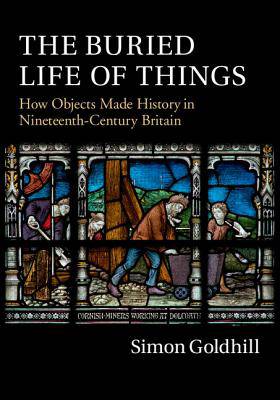
- Afhalen na 1 uur in een winkel met voorraad
- Gratis thuislevering in België vanaf € 30
- Ruim aanbod met 7 miljoen producten
- Afhalen na 1 uur in een winkel met voorraad
- Gratis thuislevering in België vanaf € 30
- Ruim aanbod met 7 miljoen producten
Zoeken
The Buried Life of Things
How Objects Made History in Nineteenth-Century Britain
Simon Goldhill
Hardcover | Engels
€ 100,95
+ 201 punten
Omschrijving
Simon Goldhill offers a fresh and exciting perspective on how the Victorians used material culture to express their sense of the past in an age of progress, especially the biblical past and the past of classical antiquity. From Pompeian skulls on a writer's desk, to religious paraphernalia in churches, new photographic images of the Holy Land and the remaking of the cityscape of Jerusalem and Britain, Goldhill explores the remarkable way in which the nineteenth century's sense of history was reinvented through things. The Buried Life of Things shows how new technologies changed how history was discovered and analysed, and how material objects could flare into significance in bitter controversies, and then fade into obscurity and disregard again. This book offers a new route into understanding the Victorians' complex and often bizarre attempts to use their past to express their own modernity.
Specificaties
Betrokkenen
- Auteur(s):
- Uitgeverij:
Inhoud
- Aantal bladzijden:
- 268
- Taal:
- Engels
Eigenschappen
- Productcode (EAN):
- 9781107087484
- Verschijningsdatum:
- 2/02/2015
- Uitvoering:
- Hardcover
- Formaat:
- Genaaid
- Afmetingen:
- 170 mm x 249 mm
- Gewicht:
- 703 g

Alleen bij Standaard Boekhandel
+ 201 punten op je klantenkaart van Standaard Boekhandel
Beoordelingen
We publiceren alleen reviews die voldoen aan de voorwaarden voor reviews. Bekijk onze voorwaarden voor reviews.











